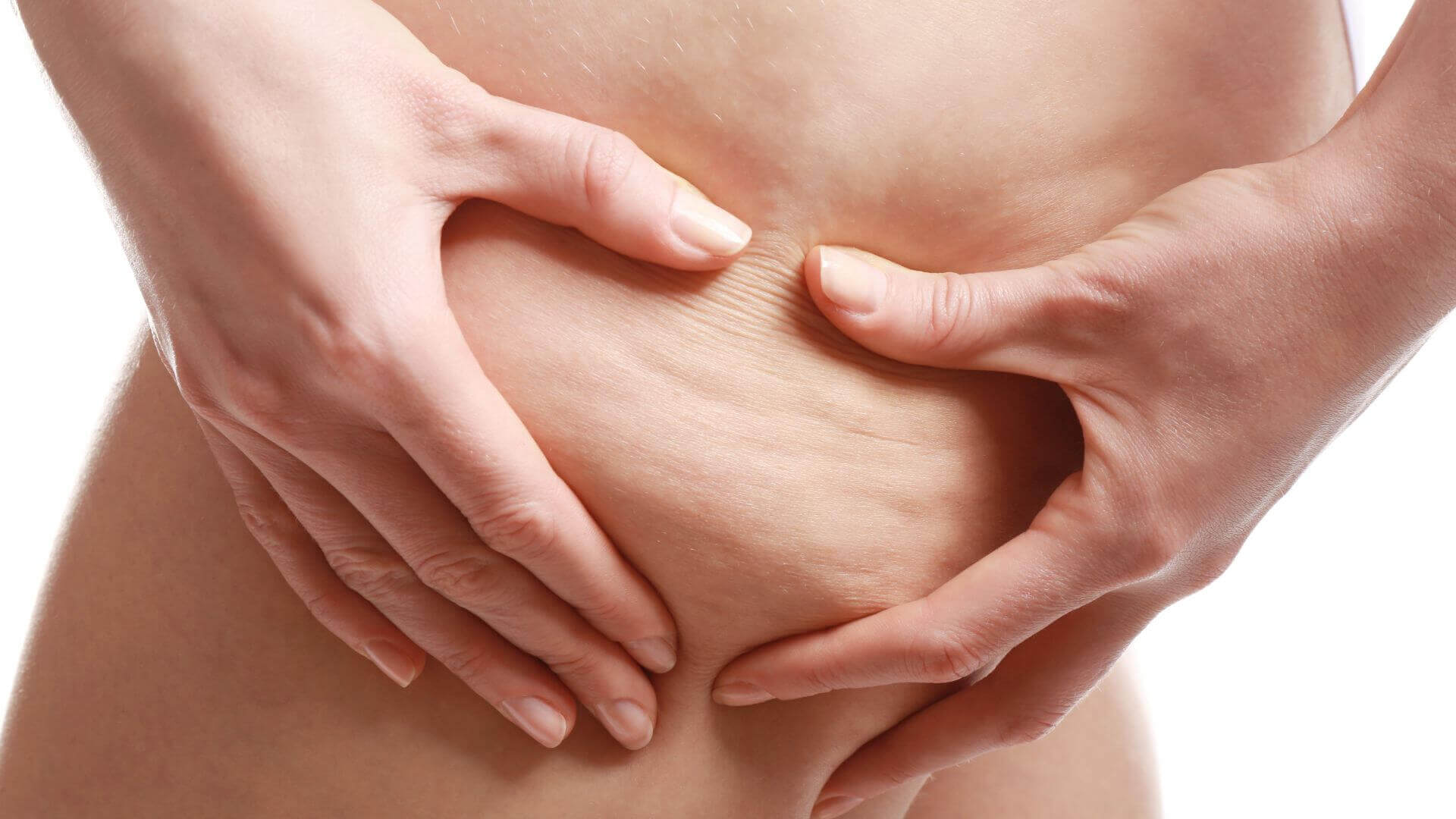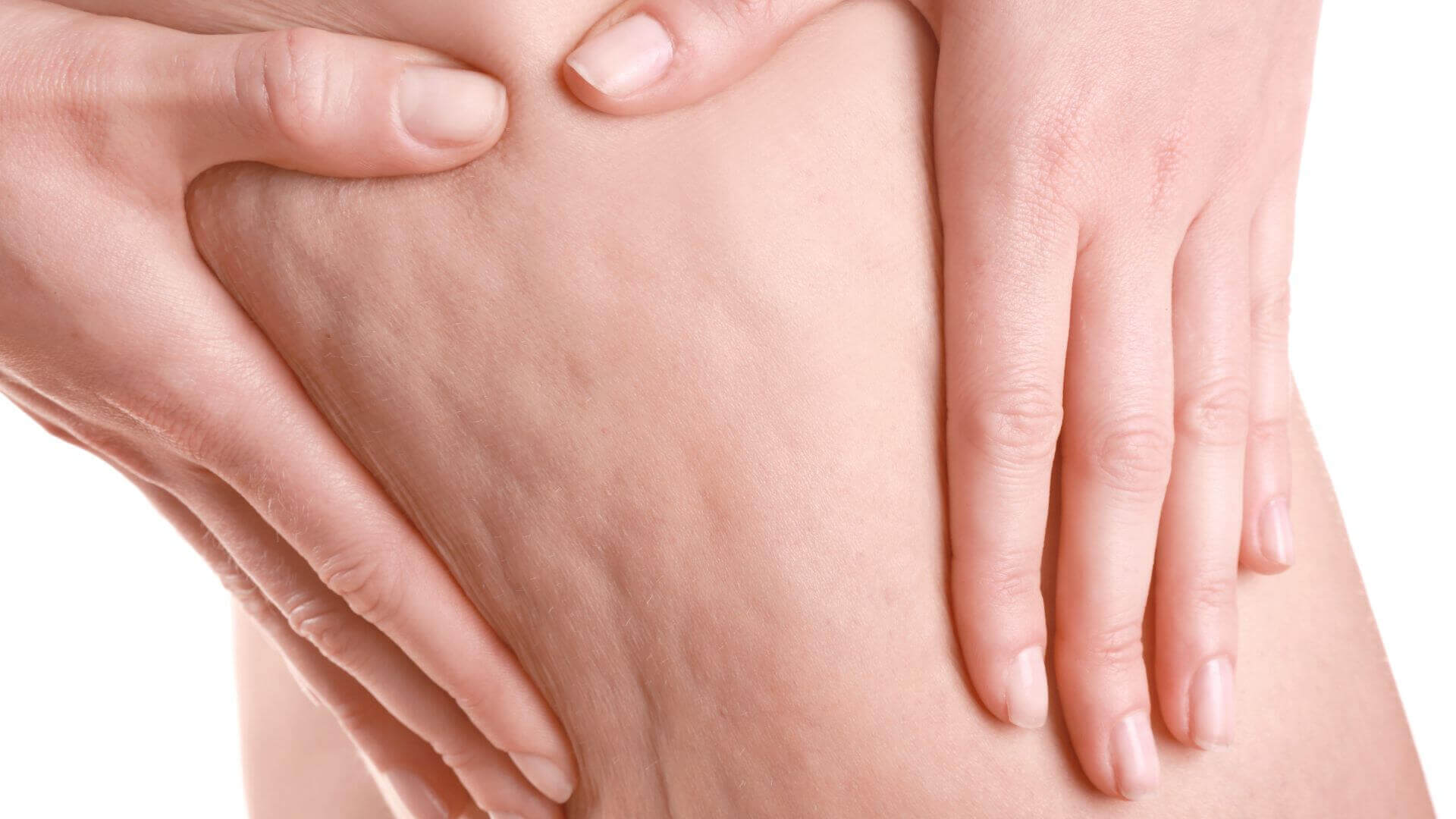People want help from body aesthetic specialists for many reasons, with some being more common than others. Cellulite is a regular concern for clients, and they often want professionals to improve how different parts of their body look, such as their abdomen, buttocks, thighs and legs. However, it isn’t always clear to clients that cellulite is a normal part of the body and that most women have cellulite at some point during their lives.
But what is cellulite, and can you treat it?
What is cellulite?

This type of skin condition is harmless and is most common in women, with 93% of females being affected within their lifetime. Whilst less frequent, it is also found in men. Cellulite causes the skin to be dimpled or lumpy, often described as resembling orange peel, though there are different variations of this condition. These are:
- Soft cellulite – The skin is not painful to touch and is spongey in appearance.
- Hard cellulite – The skin can be painful when it’s touched and it is firm.
- Edematous cellulite – This is caused by poor circulation within the body and can be made worse by the retention of fluid. This is the most complicated type of cellulite to treat.
People try to remove their cellulite long-term through exercise, weight loss, creams that are advertised as effective and massages, although there is minimal success in these methods. Though there are medically proven solutions that can be used, even these do not offer more than short-term results. As of yet, there is no permanent, long-term way to remove cellulite.
What are the causes of cellulite?

Cellulite is a common and normal type of fat that is found within the body and, contrary to popular belief, it is not caused by the build-up of toxins or obesity.
Inside the body, the skin is anchored to the underlying tissue through small connective tissue filaments. Between these two layers is fat, and cellulite is caused when the filaments pull down on the underside of the skin. Whilst this is happening, the fat cells push up, and this causes dimples. These connective tissues can be weakened by a variety of factors, such as poor circulation, hormones and a lack of muscle tone and exercise.
The design of the connective tissue is different in men and women. Women have vertical connective tissue, whereas it is crisscrossed in men. This is why women suffer more from cellulite than men, although that does not prevent men from developing this condition.
What are the symptoms of cellulite?

If a person has this skin condition, there are numerous symptoms that they may have. Cellulite causes bumpy or dimpled skin, which can be described as being similar to an orange peel or cottage cheese in texture. This is most commonly found in the buttocks and thighs, but it can also be located in other areas of the body.
A client who thinks they may have a cellulite build-up can pinch their skin in the area where they think the build-up is. If mild cellulite is there, the client will be able to see it. If the cellulite isn’t mild, the client should be able to see it without pinching the skin.
As cellulite is both harmless and common, a client is not required to seek treatment or speak with a doctor for health purposes. However, they may wish for treatment to reduce or remove it for aesthetic reasons.
How can cellulite be treated?
One of the best cellulite treatments is body contouring, which offers both surgical and non-surgical options to reshape an area of the body. It does not help a client to lose weight. Instead, it works to contour the administrated area, get rid of extra skin or remove excess fat.
Non-surgical body contouring, such as mesotherapy, treats cellulite via injections, and a dermal filler is used in a localised area. An anaesthetic cream, such as Lidocaine Numbing Cream, is administered and the filler is then injected.
There are a range of cellulite treatments on offer from Revolve Aesthetics that you can use to help clients feel more confident in their bodies. For example, Dermaheal 5ml vials are fat-dissolving injections for cellulite, as well as suitable for use in other areas of the body. Other forms of treatment available include Aqualyx, Neofound 5x3ml vials and Sosum Skin Boosters, which are a method of micro-needling to reduce cellulite. Take a look at our top tips to achieve long-lasting body contouring results to help your client’s reshaping last longer.
Can you get rid of cellulite with exercise?
Whilst exercise can help, no evidence or research suggests it can get rid of cellulite alone. Trying to remove it in this way is not only difficult but also unrealistic. This is because the appearance of cellulite is also dependent on uncontrollable factors, such as genetics and age. Instead, things can be done to make it less noticeable.
A reduction in body fat can lessen the amount of cellulite, and so can the toning of muscles. Exercise can also help to drain excess fluid, which can make cellulite harder to see, and improve circulation around the body. If a client is focused on using exercise to remove cellulite, they will need to use a combination of different workout types to help improve the toning of the skin. In particular, exercises that build muscle can help.
Whilst cellulite is common and a normal part of the body, its removal is a frequent desire from clients who seek help from aesthetic specialists. Revolve Medicare has a vast collection of products that you can use to help your clients gain confidence within themselves, including a range of dermal fillers to treat cellulite. For more information, take a look at our products to see which ones you can use to meet all your, and your client’s needs.

